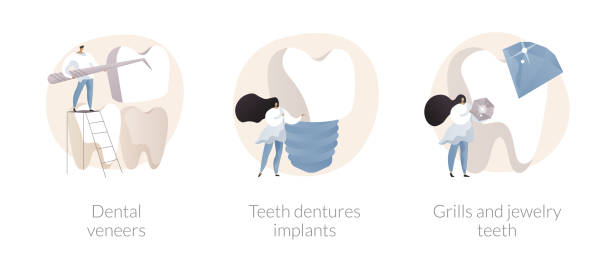Losing a tooth affects both daily life and long-term health, from chewing comfortably to sharing a confident smile. Permanent tooth replacement has transformed how we restore function and happiness. But how did these solutions develop? This blog dives into the history and innovation behind tooth replacement, highlighting key methods that have endured.
Early Innovations in Tooth Replacement
Permanent tooth replacement has a surprisingly rich history dating back thousands of years. Ancient civilizations such as the Egyptians used carved sea shells and precious metals as makeshift teeth. These early methods prioritized appearance, albeit with limited stability or functionality.
Throughout the Roman era, gold wires sometimes anchored replacement teeth made from bone or ivory. While these options offered some improvement, they were primarily reserved for the wealthy due to their elaborate and costly nature.
Bridges Take the Spotlight
The concept of the dental bridge revolutionized tooth replacement in the 19th and 20th centuries. A bridge consists of an artificial tooth (or teeth) held in place by crowns attached to the adjacent natural teeth. This approach provided a fixed, non-removable solution that delivered improved strength and aesthetic appeal compared to removable devices.
- Traditional Bridges
Traditional bridges use crowns on either side of the gap to support one or more prosthetic teeth. They have long been favored for their stability.
- Cantilever and Maryland Bridges
Cantilever bridges require support from only one neighboring tooth, while Maryland bridges use a framework that’s bonded to the backs of adjoining teeth, reducing the need for extensive tooth preparation.
Bridges became, and remain, a popular choice because they restore function and prevent other teeth from shifting.
Dentures through the Ages
While the idea of full removable dentures has ancient roots, modern permanent options are considerably more sophisticated. Some forms of dentures can be anchored to remaining teeth for added stability, ensuring a fit that feels more natural and secure.
- Partial Dentures with Precision Attachments
For those missing only a few teeth, partial dentures equipped with precision attachments are less noticeable than traditional clasps. These offer comfort as well as a sense of permanence.
- Overdentures
Overdentures rest on one or more remaining natural teeth (prepared to support them), blending the benefits of dentures with the stability offered by preserved roots. Alternatively, dental implants, like those in San Jose, CA, can provide a similar stable foundation for overdentures. This method distributes biting pressure and can help maintain jawbone health.
Advances in Materials and Customization
Beyond the design of replacement teeth, the materials have undergone remarkable progress. Early solutions used animal bone and ivory, then gold and porcelain, and today’s options include durable ceramics and advanced composite materials. Customization is now a key focus, resulting in natural-looking smiles and enhanced fit for each individual.
Digital dentistry has also played a role in this evolution. Computer-aided design and manufacturing enable precise modeling, resulting in prosthetics that blend seamlessly with the patient’s existing teeth.
Looking to the Future
Permanent tooth replacement continues to adapt to changing needs and advancing science. Researchers are exploring regenerative techniques using tissue engineering and bioactive materials that could one day help grow new teeth or create customized prostheses in entirely new ways.
Choosing the Right Replacement Method
Every mouth is unique, so a qualified dental professional will guide you in finding the best permanent solution, whether it’s a bridge, advanced overdenture, or another custom option. Considerations such as oral health, lifestyle, and aesthetic goals all factor into making the most suitable choice.
Conclusion
From shells and bone to high-tech ceramics and precision fittings, the evolution of permanent tooth replacement showcases human ingenuity and our desire for lasting solutions. With each new advance, the goal has stayed the same—to restore both function and the joy of a confident smile.



